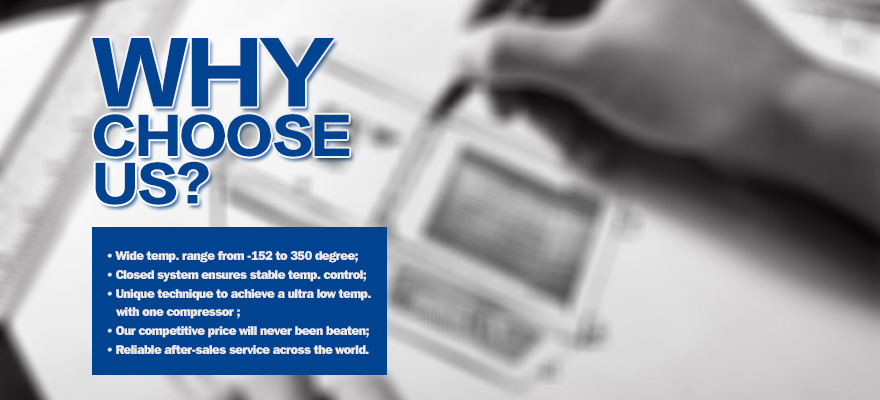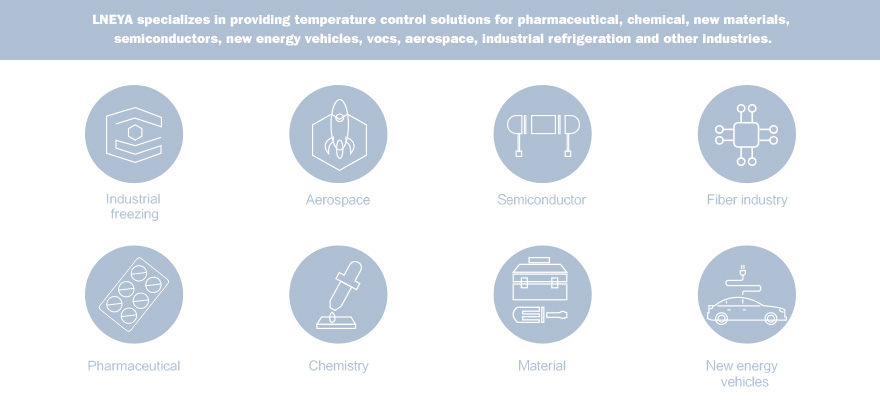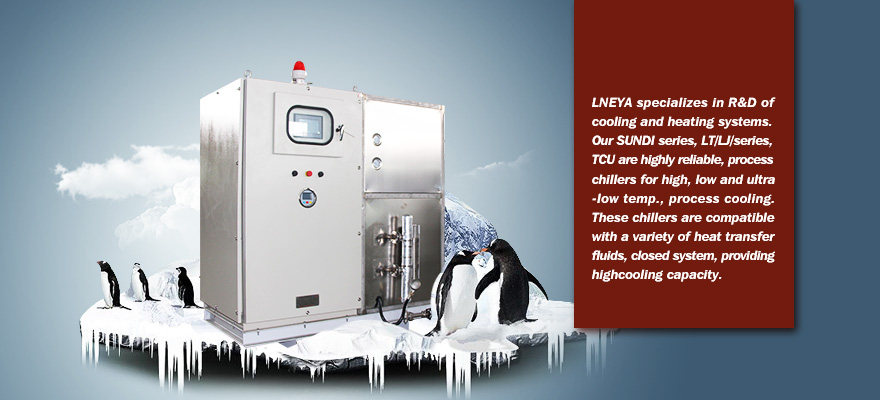| After-sales Service Provided: | No overseas service provided |
|---|---|
| Certification: | CE |
| Brand Name: | LNEYA |
| Type: | Compressor |
| Refrigerant: | 50-250 |
Quick Details
Specifications
Typical application of refrigeration heating temperature control system
Dynamic constant temperature control of cold and heat source of high pressure reactor, dynamic constant temperature control of cold and hot source of double-layer glass reactor, dynamic constant temperature control of cold and heat source of double-layer reactor
Microchannel reactor cold and heat source constant temperature control, small constant temperature control system, steaming system temperature control, material low temperature high temperature aging test
Combined chemical cold source heat source constant temperature control, semiconductor equipment cooling heating, vacuum chamber cooling heating constant temperature control
Advantages and functions of refrigeration heating temperature control system
Temperature range from -120 C to 350 C, superior performance, unique, high precision, intelligent temperature control.
Higher cooling power from 0.5 to 1200 kW, highest production stability and repeatability results
Multi-function alarm system and safety function, using plate heat exchangers, ducted heaters to increase heating and cooling rates
7-inch, 10-inch color TFT touch screen graphic display, using magnetic drive pump, no shaft seal leakage problem
Fully enclosed system for extended thermal fluid life, very wide temperature range, no need to change liquid media
Ultra-high temperature cooling technology, which can directly cool down from 300 degrees high temperature
Such a principle and function have many advantages for the user: because only the heat transfer medium in the expansion chamber is in contact with the oxygen in the air (and the temperature of the expansion tank is between room temperature and 60 degrees), the heat transfer medium can be reduced. the risk of oxidizing and absorbing moisture from the air.
No heat transfer medium evaporates at high temperature, and continuous control can be achieved with -80 to 190 degrees, -70 to 220 degrees, -88 to 170 degrees, -55 to 250 degrees, and -30 to 300 degrees without pressurization. Temperature.



Dynamic constant temperature control of cold and heat source of high pressure reactor, dynamic constant temperature control of cold and hot source of double-layer glass reactor, dynamic constant temperature control of cold and heat source of double-layer reactor
Microchannel reactor cold and heat source constant temperature control, small constant temperature control system, steaming system temperature control, material low temperature high temperature aging test
Combined chemical cold source heat source constant temperature control, semiconductor equipment cooling heating, vacuum chamber cooling heating constant temperature control
Advantages and functions of refrigeration heating temperature control system
Temperature range from -120 C to 350 C, superior performance, unique, high precision, intelligent temperature control.
Higher cooling power from 0.5 to 1200 kW, highest production stability and repeatability results
Multi-function alarm system and safety function, using plate heat exchangers, ducted heaters to increase heating and cooling rates
7-inch, 10-inch color TFT touch screen graphic display, using magnetic drive pump, no shaft seal leakage problem
Fully enclosed system for extended thermal fluid life, very wide temperature range, no need to change liquid media
Ultra-high temperature cooling technology, which can directly cool down from 300 degrees high temperature
Such a principle and function have many advantages for the user: because only the heat transfer medium in the expansion chamber is in contact with the oxygen in the air (and the temperature of the expansion tank is between room temperature and 60 degrees), the heat transfer medium can be reduced. the risk of oxidizing and absorbing moisture from the air.
No heat transfer medium evaporates at high temperature, and continuous control can be achieved with -80 to 190 degrees, -70 to 220 degrees, -88 to 170 degrees, -55 to 250 degrees, and -30 to 300 degrees without pressurization. Temperature.



